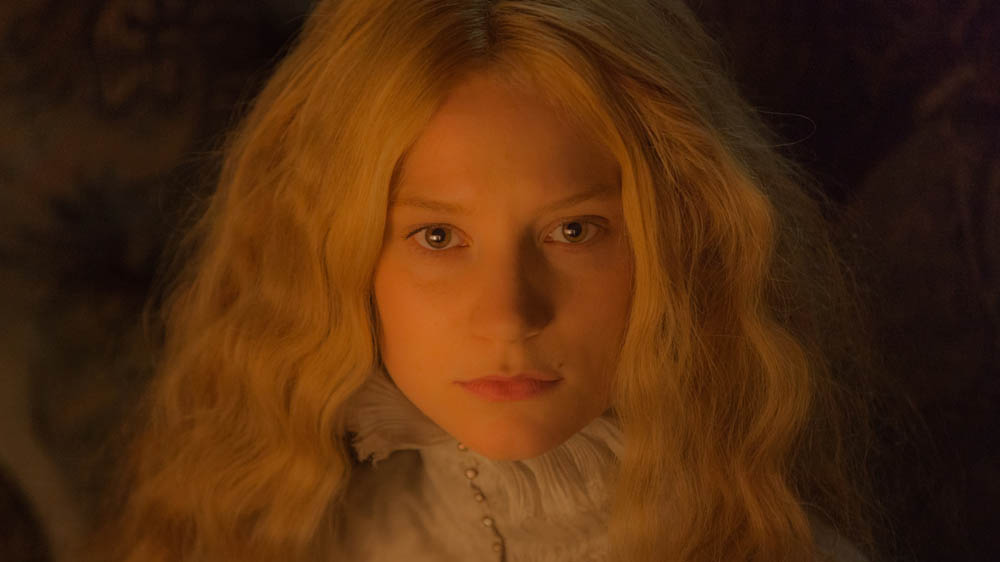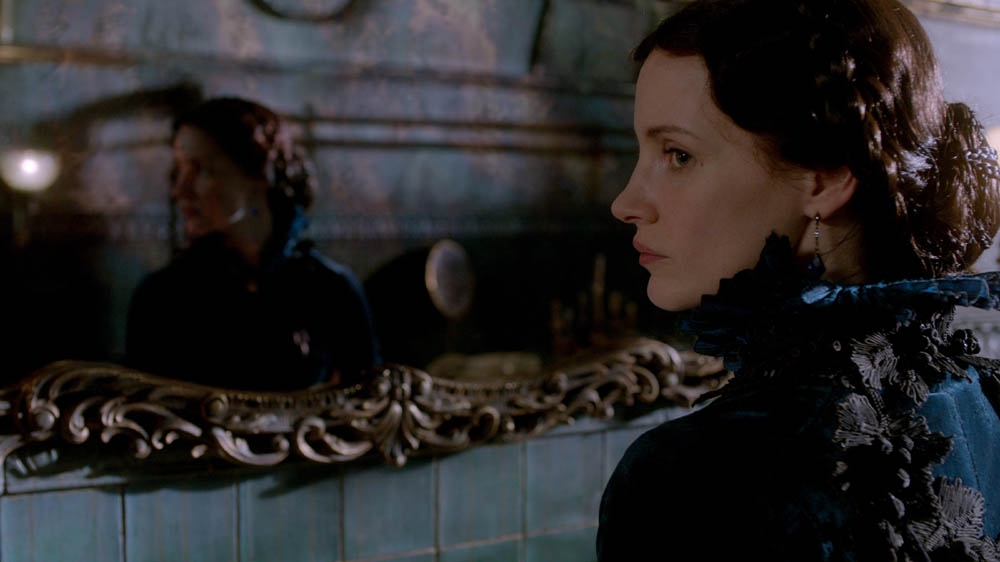Of all the filmmakers working in Hollywood today, Guillermo del Toro is one of the most fervently followed.
The cult of interest that springs up around any project he’s attached to is well earned: smaller scale Spanish language classics (Cronos, Pan’s Labyrinth) are offset against mega-budget Hollywood blockbusters (Hellboy, Pacific Rim) in his back catalogue, and all are impressive in their own way.
While del Toro often uses the acclaim from the former to allow him license to play with the latter, having fun in Hollywood’s toy box, his latest film – gothic horror Crimson Peak – sits somewhere between his two usual styles. And it is, with every fibre of its being, eminently del Toro.
The story follows Mia Wasikowska’s Edith Cushing, a young would-be-author in the late 19th century, who is aware of the existence of ghosts after a childhood visitation from her recently deceased mother, who offers up a chilling warning.
As an adult, Edith meets charming Englishman Thomas Sharpe (Tom Hiddleston), and finds herself whisked away to live on his derelict mansion in Cumberland, along with his cold, detached sister Lucille (Jessica Chastain). As you might imagine, nothing is quite as it seems at Allerdale Hall, and something is clearly off regarding the Sharpe siblings. Before long, Edith finds herself once more the target of supernatural entities.

Crimson Peak is a very obvious homage and tribute to the gothic horrors of old – the lead character’s surname is ‘Cushing’ for crying out loud! – and the script is at times very meta. The film uses Edith’s prospective novel (itself a ghost story) as a means of self-reference.
Every discussion of her novel is a meta-commentary on Crimson Peak itself. “I like the leading man’s darker side”, remarks Hiddleston’s Thom upon reading it. “Does he make it to the end?” It’s all in good fun, but the nod-nod-wink-wink nature of it isn’t as clever as perhaps del Toro and co-writer Matthew Robbins think it is.
The film is a mish-mash of influences that the picture wears very brazenly on its sleeve. A reference to Jane Austen, for instance, is followed by a sequence that just happens to be a perfect rendition of a Jane Austen dance scene, while Charlie Hunnam’s Dr. Alan is a fan of Conan-Doyle books, and happens to become a Sherlock-esque detective in his attempts to track down and rescue Edith.
The characters in Crimson Peak are all rather arch, the setting is lavish but traditional, and many of the incidental moments are visually very familiar… the whole film is intentionally reminiscent of ones you’ve seen before. But that’s the point, and the film does it brilliantly; dressing up old tropes and wheeling out conventions in a perfect, contemporary cinematic presentation of a gothic horror film.
But Crimson Peak never quite manages to do any more than that. It’s all very reverent and respectful to its cinematic lineage, and for anyone who loves films, that reverence will be appreciated. But the film needs to be more than just a pretty love note to the films of del Toro’s youth.
As Edith, Mia Wasikowska does her best, but her character is particularly thin; little more than a cipher. Chastain, meanwhile, puts so much into getting the English accent right that the rest of the performance suffers. Her Lucille is meant to frosty, and Chastain certainly delivers there, but never does it feel like the character’s sense of detachment is intentional. It’s an empty performance. Hiddleston, on the other hand, is reliably excellent, and his character is by far the most interesting, gifted with the most pronounced emotional arc.
You’ll get the sense when watching Crimson Peak that with del Toro wheeling out so many conventions, that he must surely have a twist to throw into the mix; a fresh spin to put on things. He doesn’t. The story unfolds largely the way you expect it to, and the film becomes predictable. That doesn’t necessarily mean bad – the story is told well – it’s just a shame there isn’t more going on.
But if the storytelling is pedestrian, the look of the film is eye-meltingly gorgeous. Very few people make films that look as good as del Toro, and Crimson Peak is a visual tour-de-force, featuring remarkable set design, luxurious costumes, and all sorts of baroque geometries on Allerdale Hall itself.
There’s a gimmick at play that gives the film its title – Allerdale Hall is built atop a large clay deposit – and as such everything is stained red. The house appears to bleed; the red mud seeping down walls, up through floorboards, out of taps, and staining the snow on the ground a striking scarlet. It’s a genius gimmick, brilliantly depicted.

The film also does a good job with its ghosts and ghouls, whose creepy sound design and erratic movements are genuinely frightening at times. The creature design is, as you’d expect from the man who gave us Pan’s Labyrinth’s Pale Man, vividly terrifying.
But despite that, Crimson Peak is not strictly a horror film. It’s a gothic romance; a film that just happens to have some ghosts in it. They’re effective when they appear, but they aren’t the be-all-and-end-all. Indeed, perhaps the most horrific part of the film is the violence enacted on characters by each other: del Toro does not flinch on the brutality or gore.
Crimson Peak is certainly a better film than Pacific Rim, and aesthetically speaking, it makes for a brilliant companion piece to Pan’s Labyrinth. It can’t hold a candle to that film’s storytelling, but there’s an argument to be made that it isn’t trying to.
This is a rather old fashioned piece of storytelling, presented in sumptuous, dazzlingly beautiful and evocative fashion by a director whose visual palette is very finely attuned. The film is a beautiful throwback – it’s just a shame that it doesn’t offer a little more.
Released in UK cinemas on Friday 16 October 2015.
> Buy Crimson Peak on DVD on Amazon.
What did you think of Crimson Peak? Let us know below…

